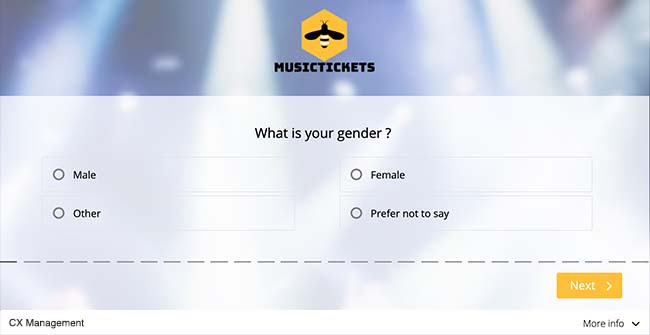Socio-demographic characteristics enable you to segment your customers according to their age, sex, profession, education, etc. They are essential when designing targeted marketing campaigns. Essential but sometimes insufficient, as we will see. The role of socio-demographic characteristics in segmentation To be able to target and personalise your marketing campaigns – whatever they may be –...
Socio-demographic characteristics enable you to segment your customers according to their age, sex, profession, education, etc. They are essential when designing targeted marketing campaigns. Essential but sometimes insufficient, as we will see.
The role of socio-demographic characteristics in segmentation
To be able to target and personalise your marketing campaigns – whatever they may be – you must segment your CRM base. Segmenting means categorising your clientele according to certain criteria. These characteristics enable you to group together customers with something in common (homogeneous customers): the same purchasing behaviour, gender, hobbies, interests, of the same age group, etc.
It is necessary to segment your CRM base in order to then accurately target your marketing actions. All the characteristics (or almost) can be grouped into three categories. There are 3 groups of characteristics you need a good understanding of to segment your customer base:
- Socio-demographic characteristics, that will be explored throughout this article.
- Psychographic characteristics, such as your clientele’s personality traits, interests or even opinions. The interests criterion is particularly important for targeted marketing.
- Behavioural characteristics, such as your customers’ buying behaviour. This criterion makes it possible, for example, to separate regular customers from irregular ones, customers who have purchased within the last month from those who have been inactive over several months, etc.

When applying targeted marketing, these segmentation characteristics can be, and should be, cross-referenced. Take for example the “under 50 housewife”, i.e. women (criterion: sex) under 50 years of age (criterion: age), belonging to the “middle classes” (criterion: socio-professional group).
Hence the importance of using several segmentation characteristics. Which requires good customer knowledge beforehand. A detailed segmentation of your customers, using a lot of different characteristics, requires your CRM to be rich in customer data.
Which socio-demographic characteristics can you use?
There are two types of socio-demographic characteristics, as suggested by their name: sociological characteristics (or “social”) on the one hand and demographic characteristics on the other. But, in practice, geographic characteristics are often added to the above. In addition, demographic characteristics also include economic ones.
All these criteria have one thing in common; they describe objective situations or characteristics relating to your customers (for example, their age). In this sense, these characteristics are very different to psychological or behavioural characteristics, which are both subjective.

Socio-demographic, geographic and economic data is the easiest kind to collect from customers. Which is why these characteristics are widely used by marketers.
The main sociological or social characteristics are:
- Gender (man/woman)
- Age or age group
- Family composition and household size (single / in a relationship; children / no children, etc.)
The main geographic characteristics:
- Country
- Region
- County
- City
- City population
- Climate
- Type of residence
The main demographic (and economic) characteristics:
- Education
- Profession
- Socio-professional group
Why use socio-demographic characteristics?
There is no doubt about the value of these characteristics. The desires and purchasing behaviour of consumers in general, and your customers in particular, are always closely linked to their socio-demographic characteristics.
Depending on their age, sex, income, social group, residential area (urban/rural), climate of their region, size and composition of their household (with children/without children), etc., your customers do not buy/are not interested in the same products.

Of course, what we are does not always determine what we like. Without slipping into essentialism, it would be absurd to deny the influence of these objective characteristics.
Although this criteria may not seem accurate enough to target customers, it can nonetheless help remove certain segments from your marketing campaign. For example, you can easily remove any households without children from your back-to-school email campaign.
The limits of socio-demographic characteristics
If you want to design ultra-targeted marketing campaigns, you cannot limit yourself to socio-demographic characteristics.
These characteristics enable you to categorise your customers according to who they are: men or women, young or elderly, middle or working class, single or married, parents or not, etc.
But what your customers are does not fully determine what they do or what they want. Some boys play with dolls, some men use make-up, some elderly people do sports and buy sports equipment, etc. This is the first limitation of socio-demographic data.

Cross-referencing socio-demographic data with psychographic data can be very useful. For example, if you want to deploy a marketing campaign to sell men’s sportswear, instead of only targeting males under 50, you could target all your customers who have expressed an interest in sports. This enables you to also include elderly people who play sports and who may be interested in your products.
The second limitation of these characteristics is that, by very definition, they do not reflect your customers’ actual behaviour. Over the past few years, behavioural characteristics have become increasingly important. It could be said that behavioural characteristics are at the heart of real-time personalised marketing.
Simply ask your customers! This is common practice in marketing, so they won’t have any particular reservations about communicating this information. A newsletter or loyalty programme registration are both perfect opportunities to ask these questions. Smart surveys are also ideal tools to collect this information and feed it into your CRM. A little piece of advice: ask questions enabling you to collect socio-demographic data at the end of your survey. This gives your respondents the opportunity to understand your overall approach, making them more likely to answer personal questions.
New technology makes it possible to accurately measure your customers’ behaviour and tends to reduce the role of these once dominant socio-demographic characteristics. Nowadays, it is easy to know what a specific customer bought, and how often that customer buys from you. This knowledge is just as important, if not even more so, than knowing how old your customer is. These characteristics are essential. Businesses will continue to use them in targeted marketing campaigns. They are the easiest kind to collect from your customers, so it would be a shame not to.
How to collect your customers’ socio-demographic characteristics









